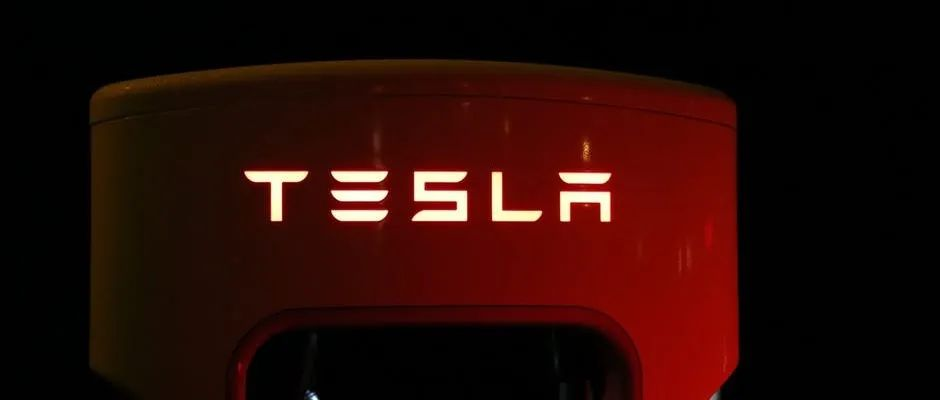Author: Zhu Yulong
We took a serious look at Tesla’s area controllers from Model 3 to Model Y, which have iterated from the first generation to the third.
From a compatibility perspective, these three controllers have maintained forward compatibility on the interface, but the internal functional allocation has indeed undergone iterations.
From my observation, the main changes are as follows:
- The three controllers have completely allocated the functions of body control, thermal management, and ultrasonic assistance from a functional perspective.
- The three controllers also bridge some of the functions of steering (steering tube residence) and parking together.
- The three controllers have eliminated all relays by using E-fuse, realizing the power distribution design of all controllers.
- All communication is covered, and all CAN and LIN communication is effectively transmitted to the central controller.
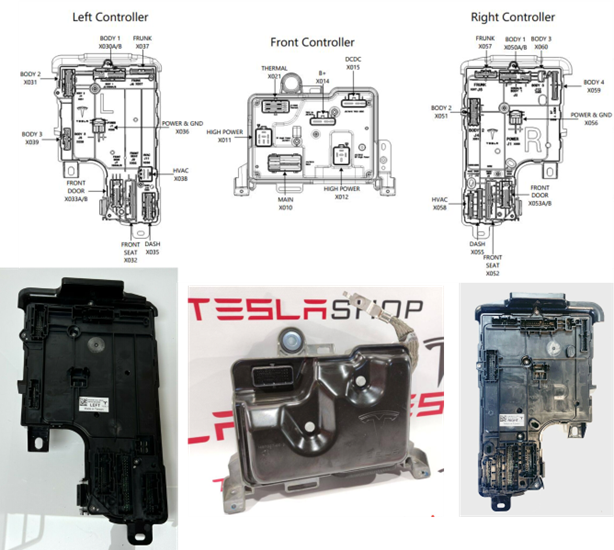
I am also interested in the fact that Tesla has redefined the connectors of all three controllers and reduced costs by using tailor-made connectors. In fact, we can see that in the self-made controllers such as BMS, inverter connectors, and charging controllers, they all use this approach on the connectors.
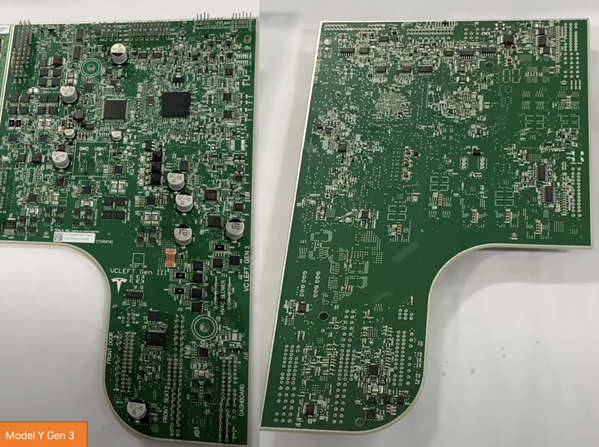
Functional Allocation
After careful comparison, all three controllers have basic zonal functions of communication and power distribution (in other car manufacturers, Ethernet is often used for this purpose, but the communication network nodes of Tesla are not many and are merged); then, a large number of functions are merged inside–I analyzed it, mainly including body control, thermal management, accessory, parking, and seat control functions.
In comparison, if these three Zonal controllers are done by other car manufacturers, they generally will be divided into door modules, integrated body controllers, seat controllers, HVAC thermal management controllers, front-end cooling controllers, and parking controllers. There are so many lighting controls that the interior lighting may be separated and done by a separate controller.
In terms of control structure, the three area controllers can be implemented using distributed control, or some top-level applications can be implemented on the information master system to achieve system control.
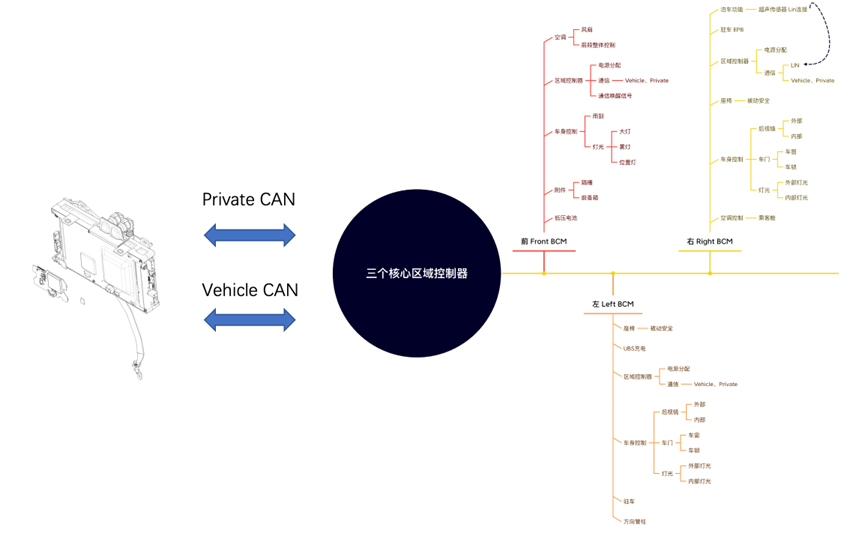 The left Body Control Module (BCM) module has 9 connectors, and its function has been sorted out based on previous work. Refer to the following figure for the functionality and pins of the Left Zonal Controller:
The left Body Control Module (BCM) module has 9 connectors, and its function has been sorted out based on previous work. Refer to the following figure for the functionality and pins of the Left Zonal Controller:
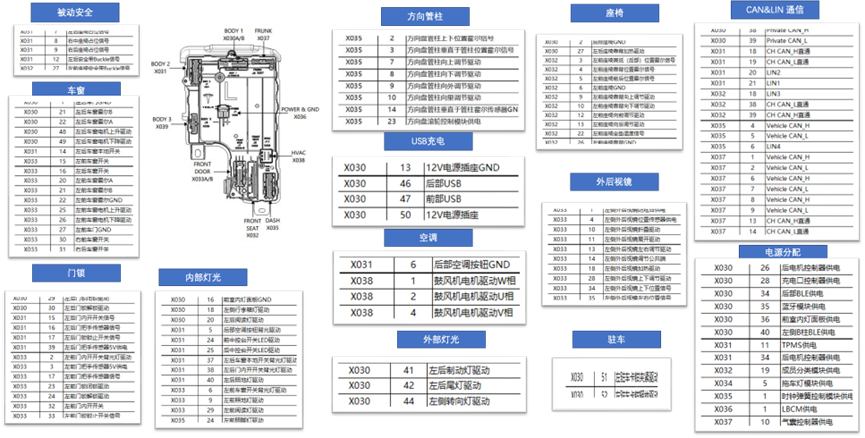
The Right BCM also has 9 connectors with functionality as shown in the figure below:
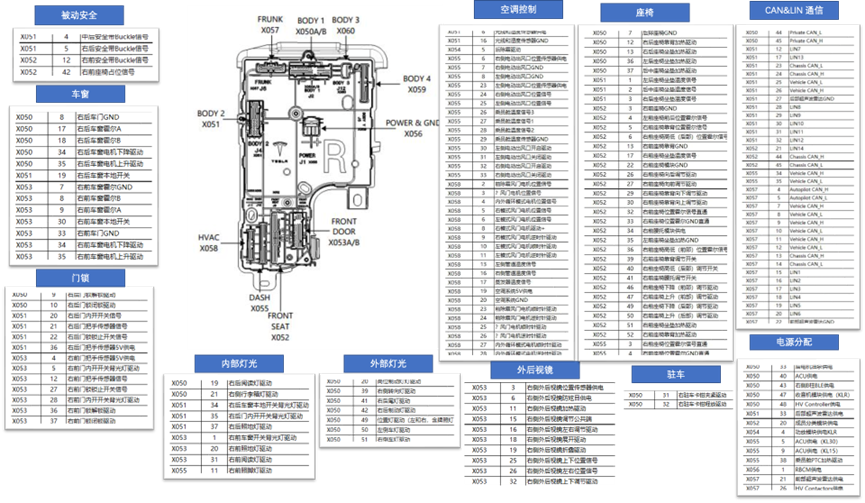
The Front Controller also includes 6 connectors. Its main function is to bring in control over all the things needed in the front and distribute the 12V power to the necessary electrical appliances. Due to this component being related to the 12V distribution system and being located in the front cabin, it has been designed with robust structure, featuring an all-metal design that facilitates passive cooling in the distribution system.
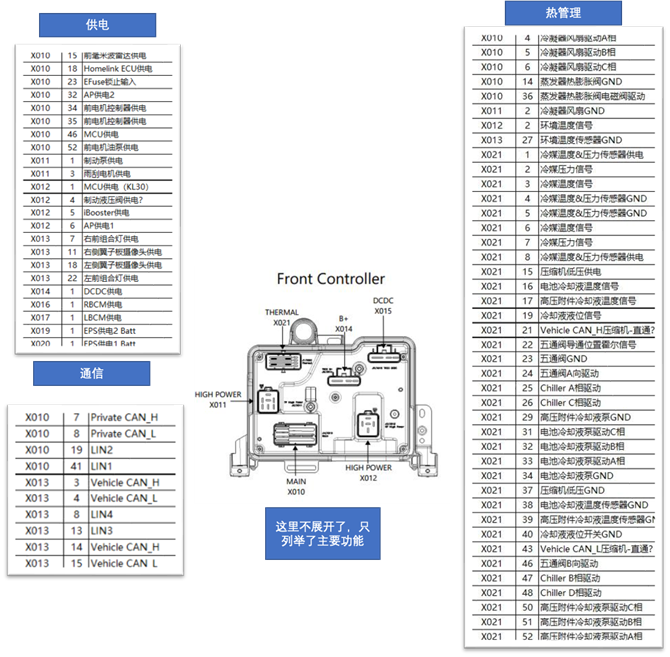
Here, I have outlined the overall thermal management system, including complex heat pump mode functionality, which I think should be done in the top-level software system and distributed across the logic of the four modules. This will enable a single controller to perform the Co-pilot function, resulting in an innovative design. Tesla has not only implemented the design based on the overall functional principles, but also allowed different thermal management suppliers to integrate into the entire software and system, thus achieving self-control.
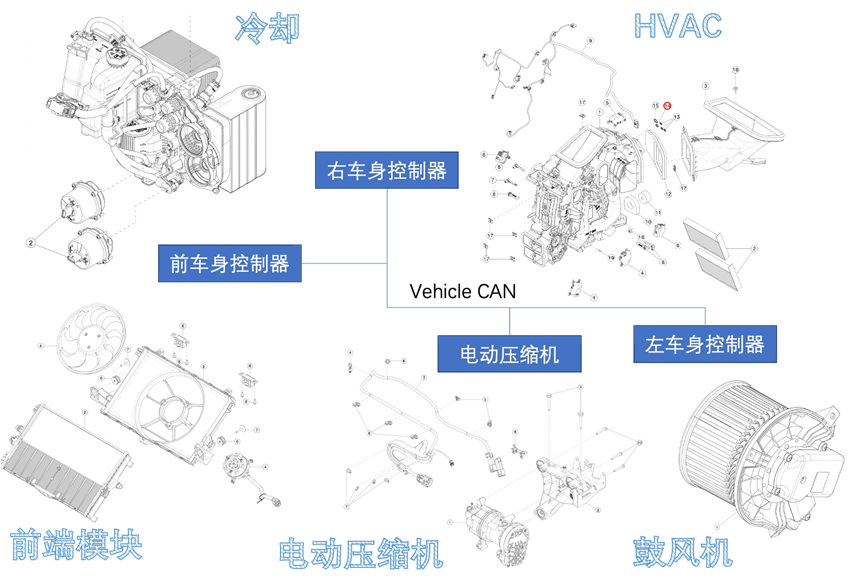
Controller Iteration
In the video by Grandpa Munro, we can see the changes from Gen1 to Gen3, one of which is the difference in the front panel:
- Iteration of both MCUs
From the current information available, both MCU processors used by Tesla, SPC56EC74 and SPC560C50L, have been upgraded.
- Input connector for 12V power supply
We can see that the 12V power supply for several controllers has been replaced from twisting connections to blade-type connectors.
Looking from the back, Tesla has strengthened the entire main body:– So we changed from single-sided to double-sided circuit board, which increased the overall efficiency of use. This is also a key factor for further adding functions and improvements to the board later on.
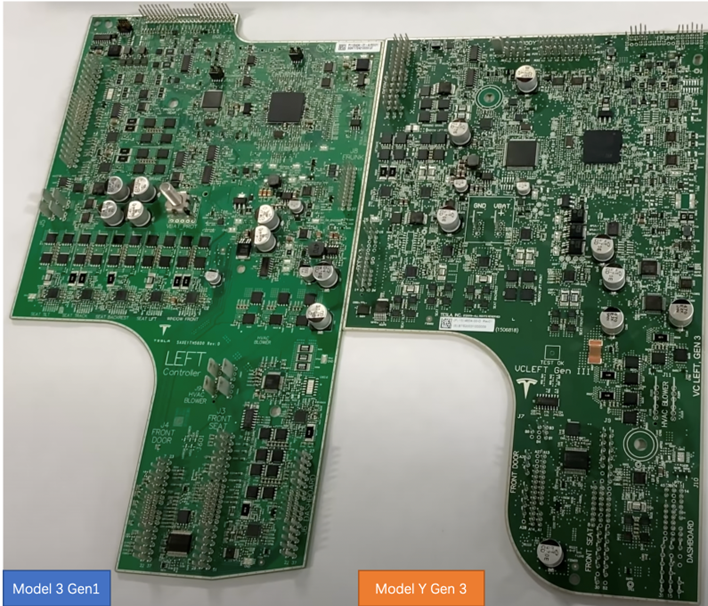
- Additionally, many drivers and units have been added to the backside, which is equivalent to adding a lot of functionality to the original single-sided board. In this way, all the necessary functions have been added.
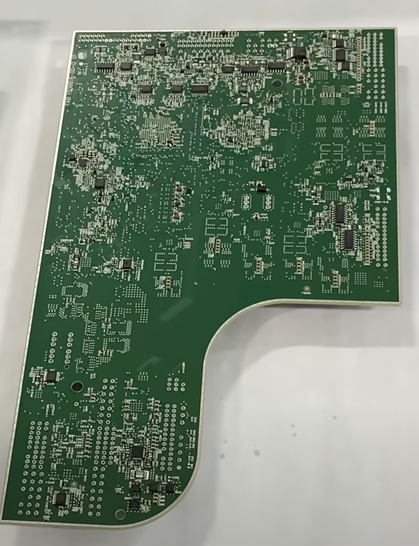
In summary, it is difficult to become an electronic supplier to Tesla, apart from OEM manufacturing. From the perspective of cost breakdown, Tesla’s growth in many fields has surpassed that of existing tier 1 companies through the development of software and system integration capabilities. This is something that other OEMs find hard to accept.
This article is a translation by ChatGPT of a Chinese report from 42HOW. If you have any questions about it, please email bd@42how.com.
